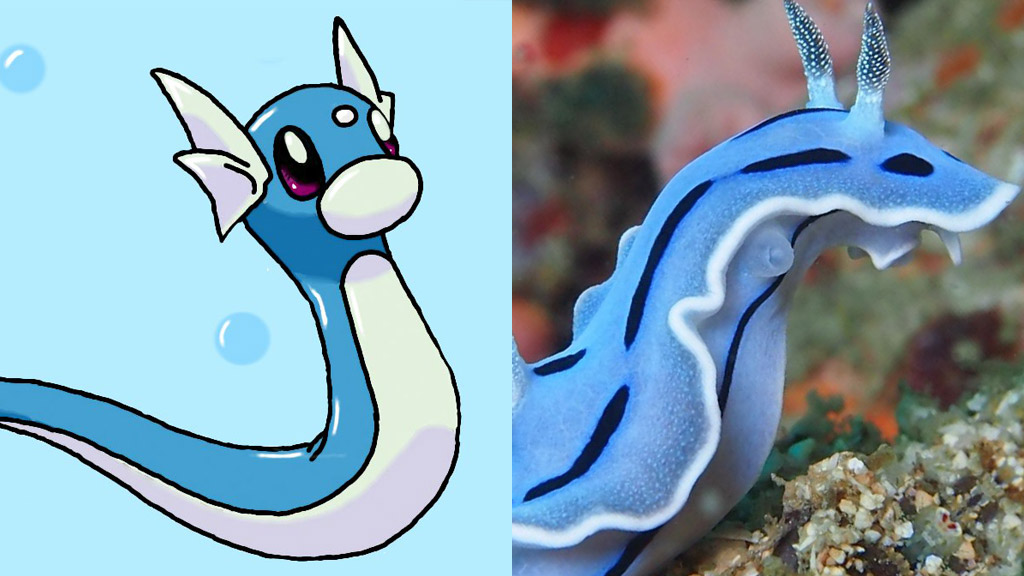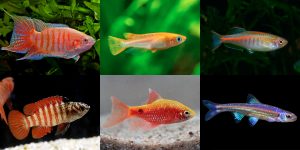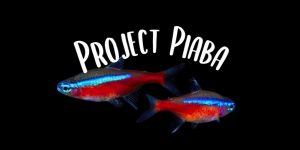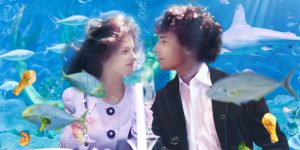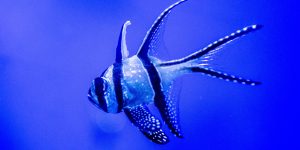Back in 2019, Oceana en México posted a Twitter thread likening various nudibranchs or sea cucumbers to characters from the Pokemon franchise. The conservation organization is dedicated to protecting and restoring Mexico’s seas with science-based campaigns for real change.
It’s something that’s lived rent-free in our heads ever since, especially in light of the organization’s cheeky, ongoing #SendNudibranquios hashtag (a play on a very well-known meme). Exactly three years on, we’ve decided to take a look back at Oceana en México’s efforts.
It’s a look back that starts with their comparison between the sea cucumber (or sea slug) species Willan’s chromodoris and the first-generation Pocket Monster, Dratini.
Willan’s chromodoris and Dratini
Willan’s chromodoris (Chromodoris willani)
Willan’s chromodoris is a species of sea slug named for the renowned nudibranch taxonomist Dr. Richard C. Willan. Willan’s chromodoris is found in the Western Pacific Ocean and ranges in colour from dark blue to a translucent white.
First-generation Pokemon Dratini
Meanwhile, Dratini is a dragon-type Pokemon introduced in the gaming franchise’s first generation. Dratini evolves into Dragonair starting at level 30. Dragonair then evolves into Dragonite starting at level 55.
Costasiella / Shaymin pic.twitter.com/JCQX9dRoHw
— Oceana en México (@OceanaMexico) December 20, 2019
Salty ocean caterpillar and Shaymin
Salty ocean caterpillar (Costasiella kuroshimae)
Also known as the leaf sea slug, the salty ocean caterpillar is a species of sacoglossan nudibranch from the waters surrounding Japan, the Philippines, and Indonesia. Discovered in 1993, most are less than one centimetre in length, with many measuring just half that size!
Fourth-generation Pokemon Shaymin
The tiny salty ocean caterpillar bears more than a passing resemblence to grass-type mythical Pokemon, Shaymin. Shaymin first appeared in the game in generation four. While it doesn’t evolve into or from another Pokemon, it can transform into different types, including one that can fly… something that the colourful sea slug it so closely resembles certainly cannot do!
Crested nembrotha and Zygarde
Crested nembrotha (Nembrotha cristata)
The crested nembrotha is a species of colourful sea slug found on the coral reefs of the tropical Indo-West Pacific Ocean. The crested nembrotha is also known as the cabbage sea slug or cabbage patch nudibranch.
Again, Nembrotha cristata bears an uncanny resemblance to a particular Pokemon – in this case, Zygarde. Coral Key Scuba & Travel has also likened it to a mix between a llama and a 1980s sweater!
Sixth-generation Pokemon Zygarde
Zygarde is a sixth-generation Pokemon that doesn’t evolve but has three distinct variants. Nintendo introduced the first in Pokemon Sun and Moon, while the second arrived with the follow-up, Pokemon X and Y. The third was also first seen in Sun and Moon. Zygarde is part of the Pokemon Aura trio alongside Xerneas and Yveltal.
Felimida luteorosea / Parasect pic.twitter.com/hrnib69Q9O
— Oceana en México (@OceanaMexico) December 20, 2019
Felimida luteorosea and Parasect
Felimida luteorosea
Felimida luteorosea is a species of colourful sea slug from European waters. Typically measuring around 4.5cm, the yellow-spotted nudi can be found in the seas surrounding Greece, Portugal, and Spain, as well as off the coast of Angola.
First-generation Pokemon Parasect
The original Pokemon Parasect is an insect-like Pocket Monster with a colourful mushroom on its back. Yellow-spotted like its sea slug doppelganger, forest-dwelling Parasect is best known for the fighting move Spore – a long-time signature attack for the first-gen Pokemon.
Mediterranean flabellina and Nidoran
Mediterranean flabellina (Flabellina affinis)
The Mediterranean flabellina is from, you guessed it, the Mediterranean! Part of the Flabellinidae family of sea slugs, it’s what’s known as an aeolid nudibranch. That means they’re essentially snails that have lost their shells – something they all had as larvae. Yet once they pass out of their larval stage, they no longer have a shell to call home. Weird!
First-generation Pokemon Nidoran
Another first-generation Pokemon, Nidoran is a double for its lookalike nudibranch, but only in male form. While poison-type purple Nidoran♂ looks just like the Mediterranean flabellina, its female form—Nidoran♀—does not, instead being a more pastel blue colour.
Dondice banyulensis / Ponyta pic.twitter.com/znlLdSkjQu
— Oceana en México (@OceanaMexico) December 20, 2019
Orange godiva and Ponyta
Orange godiva (Dondice banyulensis)
As common nudibranch names go, Dondice banyulensis is onto something of a winner – most commonly referred to as the orange godiva, with godiva often translated as “gift of god”. Large by sea slug standards, the orange godiva grows up to 7cm in length and exists in both the Med and the Atlantic.
First-generation Pokemon Ponyta
Horse-like first-generation Pokemon Ponyta is one of the most recognisable from the series. A fire-type Pokemon introduced in the earliest versions of the game, its hooves are said to be ten times harder than diamonds! It evolves into Rapidash starting at level 40.
Bullock’s hypselodoris and Venonat
Bullock’s hypselodoris (Hypselodoris bullockii)
Hypselodoris bullockii is a variety of so-called dorid nudibranch that varies in colour from pale lilac to a much deeper purple. It’s in the latter dark purple colour that Bullock’s hypselodoris most closely resembles the similarly dark purple, red-pink-eyed first-generation Pokemon, Venonat.
First-generation Pokemon Venonat
Round, furry, and purple, first-gen Venonat has a pink pincer-like mouth and, like its sea slug counterpart, a mop of antennae sprouting from the top of its head! It evolves into Venomoth starting at level 31.
Y por último:
— Oceana en México (@OceanaMexico) December 20, 2019
Halgerda batangas / Goldeen pic.twitter.com/CixnSCC2Bu
Halgerda batangas and Goldeen
Halgerda batangas
Blob-like and peculiar-looking even by sea slug standards is Halgerda batangas. A medium-sized nudi, it exists in the tropical western Pacific, from Indonesia, Papua New Guinea, and the Philippines to Australia’s Great Barrier Reef.
First-generation Pokemon Goldeen
One of the only outwardly aquatic Pokemon on this list, fancy goldfish-like Goldeen has, that said, perhaps the vaguest likeness to a sea slug – in this instance, Halgerda batangas. Maybe if you squint with one eye… and close the other. Nice try, Oceana en México, but it’s definitely not a Willan’s chromodoris/Dratini-level likeness in this instance!
And not forgetting the Pikachu nudibranch!
It’s almost inconceivable that Oceana en México omitted to include the Pikachu nudibranch in their list. Arguably Pokemon’s most famous character, there’s a species of sea slug commonly referred to as the Pikachu variety. Perhaps even more so than any of the nudis above, the Pikachu nudibranch (Thecacera pacifica) bears a frankly unmistakable resemblance to its small yellow namesake.
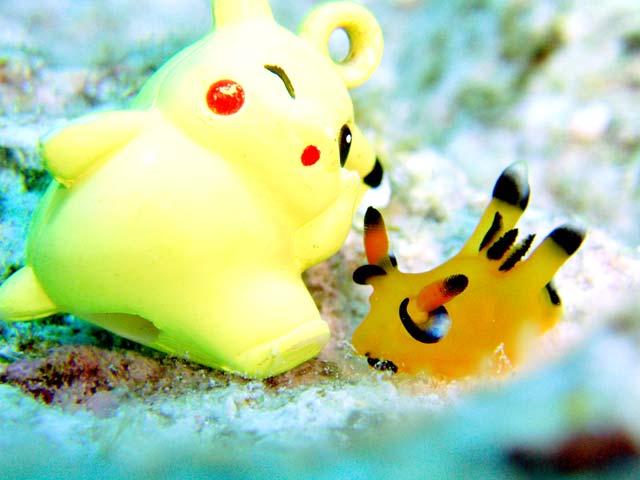
Are Pokemon based on nudibranchs?
So, were these Pokemon inspired by their lookalike nudibranchs? Given the similarities, it’s almost impossible to believe this wasn’t the case in at least a few instances. At the same time, considering the sheer variety of both nudibranchs (3,000+) and Pokemon (900+), it’s also possible that the similarities are purely coincidental.
Only the Pokemon franchise’s character artists can say for sure, and they’re seemingly rather tight-lipped on the subject. Whether that adds credence to one theory or another, it’s hard to say…
Can nudibranchs be kept in aquariums?
All of this also raises another important question: Can nudibranchs be kept in aquariums? On the one hand, yes – they absolutely can. However, only a tiny number are suited to life in captivity. That’s because of their incredibly specific diets. Their diets often consist of things like sea sponges – particularly those of a similar colour or appearance, as many varieties have evolved to look like what they eat as an effective form of camouflage.
That said, an example of one nudibranch that does do well in aquariums is the aptaisia-eating berghia nudibranch (Berghia stephanieae). All that these admittedly rather plain-looking nudibranchs eat is the pest anemone species, aiptasia (Aiptasia mutabilis). Also known as glass anemones, these often hitchhike into aquariums on rocks and corals, much like snails on plants in freshwater aquariums.
Known to sting corals, most reef tank owners seek to eradicate them. One of the most effective ways to do this is by introducing several berghia nudibranchs. However, it’s important to remember that once they’ve eaten all of the pest anemones that exclusively form their diet, they must be moved to another tank containing aiptasia, or they’ll quickly starve.
Elsewhere, most of those shown above are wholly unsuited to captive life. Especially in smaller aquariums, they would likely be doomed to starve to death, unfortunately. So, like many of the more unusual things in nature, they’re generally animals that should be enjoyed in photographs of them in their wild habitats, just like those above!
